HxD 2019 — Health Experience Design Conference (Boston, MA)
Published on Apr 5, 2019
Every time I go to a conference, I do my best to summarize the most important things I learned. This year, I started the conference season by volunteering at Mad*Pow’s Health Experience Design Conference (HxD).
For each keynote and track I attended, I’ll be sharing a 5-point summary. I hope this post can help others were not fortunate enough to attend learn more about the field… or inspire those who shared this experience to continue the conversation!
April 2 Afternoon: From Innovation to Execution
Presentations by:
- Andrea Archer, MFA. and Bruno Silva, Arnhold Institute for Global Health at Mount Sinai Hospital
- Madhavi Jagdish, PEAR Therapeutics
- Naomi Fried, Health Innovation Strategies
How might we develop a “learning network” that leverages emergent knowledge and creates a culture of change among leadership?
- Convince upper management to adapt to the needs of individuals in the clinic by leveraging their skills to empower them on the ground level.
- Solutions have to be simple in order to enable conversations across the disparity of skill-sets and education levels.
- Usability testing does not identify the solution, it identifies issues with a prototype that you can further iterate on.
- Pilot programs should have clear metrics — not moving goalposts. Fast, cheap failure is a form of success.
- For startups working to change the industry, you need a “clinical champion” to carry your solution through the innovation process internally.
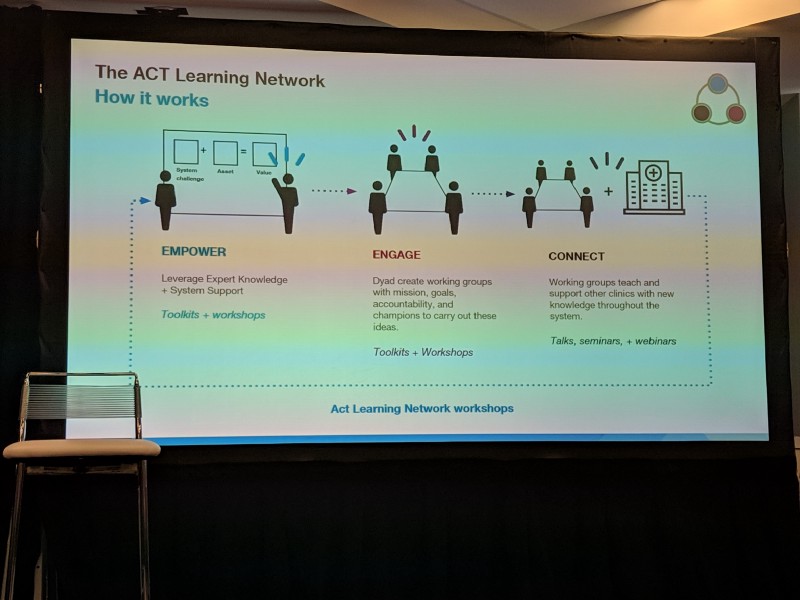 The ACT learning network was used by Mt. Sinai hospital to scale the design process and empower those within the hospitals to champion and carry out their own solutions.
The ACT learning network was used by Mt. Sinai hospital to scale the design process and empower those within the hospitals to champion and carry out their own solutions.
April 2 Keynote: Karen Dillon, NYT Best-Selling Author
Strategy is formed by everyday choices of 100% of individuals within a company.
- Motivations in your job can be broken into two categories: Hygiene Factors and Intrinsic Factors
- Hygiene Factors are “just for the optics” and keep you from being “unhappy”. Things like pay, parking spots, your own office, a job title.
- Intrinsic Factors are what make you happy. Things like respect from your peers, belief in the mission, chances to grow in your craft.
- To find happiness in your personal life, take a look at your “discretionary spending” of time spent outside of work. Ask yourself, am I being strategic in the way I’m spending my time? Is this strategy leading me towards happiness?
- To “stay out of jail”, it’s best decide what you stand for and stick to it. It’s easier to stay true to yourself 100% of the time than 98% of the time.
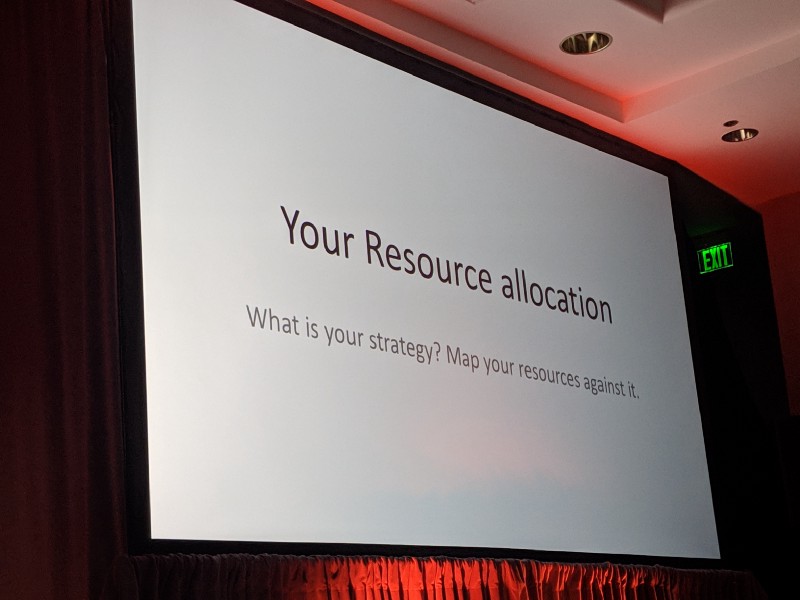 Are you spending enough time with your family? What do you want to be spending your time on outside of work?
Are you spending enough time with your family? What do you want to be spending your time on outside of work?
April 2 Keynote: Vanessa Mason, Institute for the Future
Power: the ability to drive consequences.
- Gender norms are shifting, yet 60% of femtech startups are focused on fertility. What are women-focused health applications besides fertility?
- Due to an increase in chronic illness in this generation, “youth” is not a guarantee for “health”. What does an AARP for millenials look like? What would the benefits be?
- Mental health is becoming more identifiable and discussed. How might we create spaces to create dignity and reaffirm belonging in our physical and digital spaces?
- On approach is to ask what you’re not seeing. Make power visible to measure its impact.
- Make it emotional. Ask what it means to be human in the system. Tell and create stories to speak truth to power.
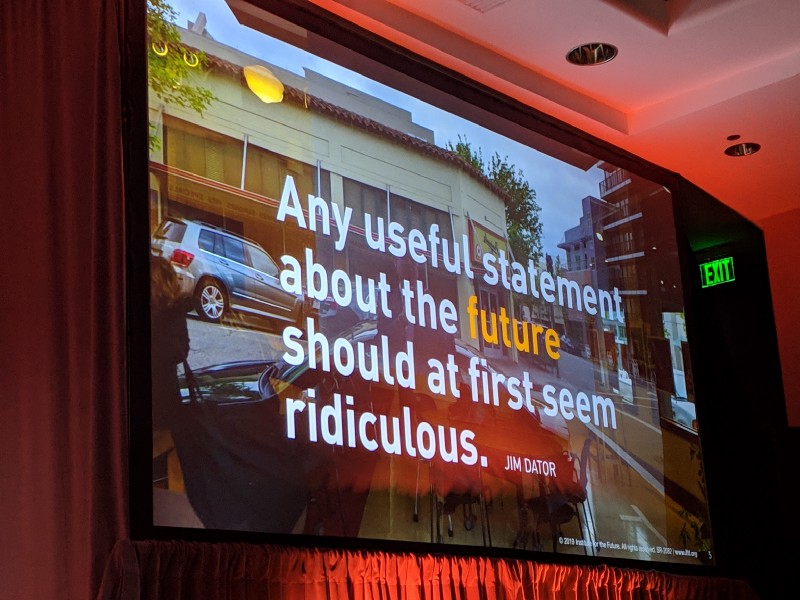 As power dynamics evolve, solutions that will work in the future may seem ridiculous today.
As power dynamics evolve, solutions that will work in the future may seem ridiculous today.
April 2 Closing: Berklee Musical Artists for Social Impact
Performed by the following artists (not in this order):
- Rebecca Marti / Andrea Brodeur
“Wildflowers” - Dom Jones / Brionna Stinnett
“Until We All Are Free” - Luna Abreu-Santana
“This I Know” - Alida McKeon “Salt”
- Brandon Crichfield “Soft Man Hands”
April 3 Keynote: Amy Bucher, Ph.D, Mad*Pow
The evaluation of a simple task can be used to determine a persons place in their journey to behavioral change.
- Systematic problems can be solved by focusing on person-centered change
- Problems, when described, tend to be system-centric. Is “Patient Experience” the right word? Are we forgetting the person in the system?
- The COM-B Model — where Capability, Opportunity, and Motivation lead to Behavioral change — can be used to identify opportunities to improve the context of decision making.
- The Transtheoretical Model — where a path to behavioral change is step-by-step in an repeating, improving, pattern — can be used to work with people where they are to take small steps toward a larger goal.
- The Self-determination Theory of Motivation — where the quality of the motivation (intrinsic vs extrinsic) matters more than the quantity — can be used to align motivators into a path toward success.
 Are we asking the wrong questions in targeting “patients” instead of “people”?
Are we asking the wrong questions in targeting “patients” instead of “people”?
April 3 Keynote: Kevin Dedner, Henry Health
Henry Health’s moonshot- To add ten years to the life expectancy of black men within the next twenty-five years.
- Untreated mental health is the silent killer of black men.
- Digital health provides a way to meet people where they are.
- Awareness is not enough. The industry needs personalized, accessible treatment for everyone.
- Better daily decision making leads to a longer life.
- How might we infuse the ideas of personal health and the disparity of life expectancy between races into our health care solutions?
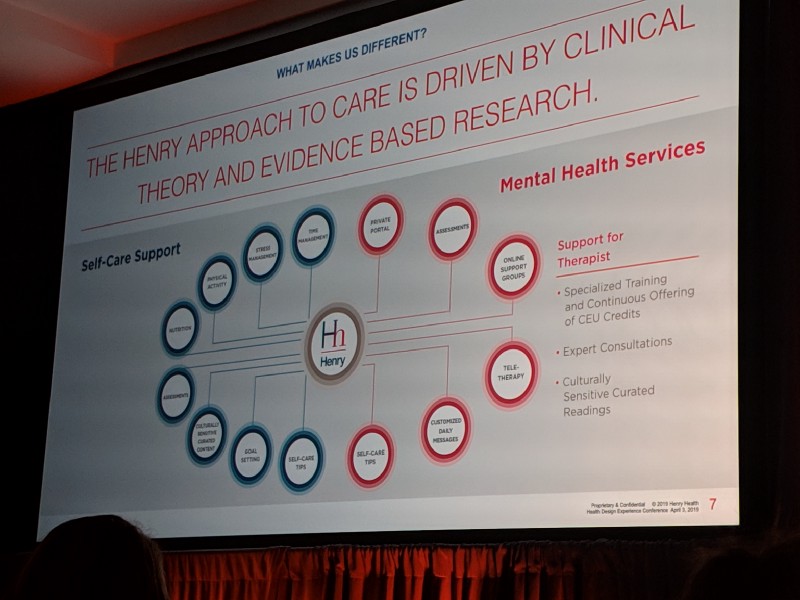 Henry Health seeks to integrate self-care into a network of mental health services
Henry Health seeks to integrate self-care into a network of mental health services
April 3 Morning: Patient Experience from Three Unique Perspectives
Presented by:
- Jennifer Smerdel, Mayo Clinic
- Brittany Merkle, Savannah College
- Cynthia Sharpe & Steven Marahn, ThinkWell Group
Treat people like they belong as part of the process. Invite them to be a part of it.
- Now that the patient experience has ties to monetization, hospitals are starting to pay every more attention to improving it.
- Tools like ePROs (electronic patient reported outcomes) are valuable as longitudinal data sources, but they have to be given within the right contexts, with informed consent of the patient and in the least invasive form possible.
- People’s needs are not just medical, they’re human. Context is everything and provide the basis for our understanding of a person’s story.
- Don’t just design for the optimal path. Plan and build for the expected deviations from the path to satisfy all users across a variety of contexts.
- Clinical experiences must be designed beyond hospitality. Apply design principles to clinical and operational outcomes/experiences to create a seamless “patient experience”
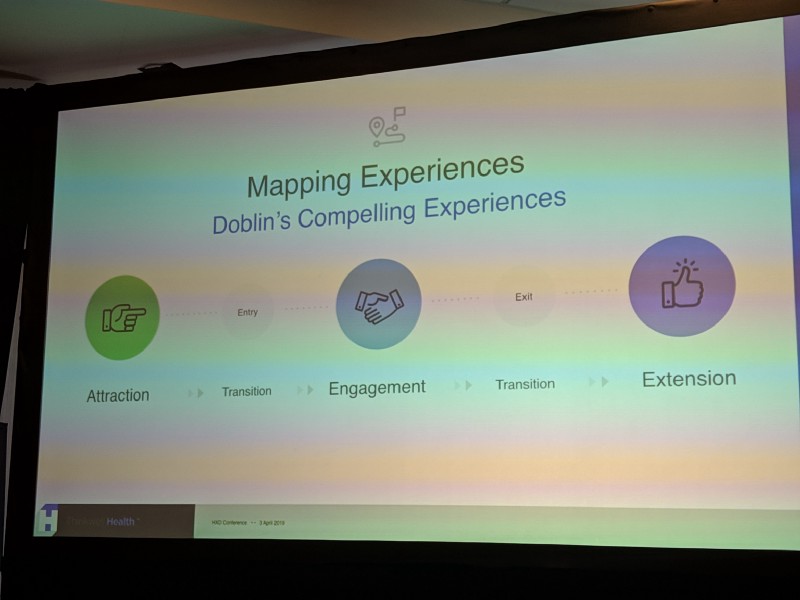 People experience similar touchpoints at theme parks that they do in a medical setting — but one is significantly more enjoyable than the other. People, Places, Platforms and Process have a lot to do with that.
People experience similar touchpoints at theme parks that they do in a medical setting — but one is significantly more enjoyable than the other. People, Places, Platforms and Process have a lot to do with that.

Following the morning sessions, I had to leave due to other obligations. I definitely learned a lot and enjoyed engaging with a community whose “backstage processes” are hidden from my view as a patient. In the future, I hope to understand more about the discrepancies between small and large clinics, their different views of the patient experience and how alternative “payer” systems might affect them.
If you have any ideas or attended different sessions, I would love to hear from you! Leave a comment below, or find me on the Center HxD community!

